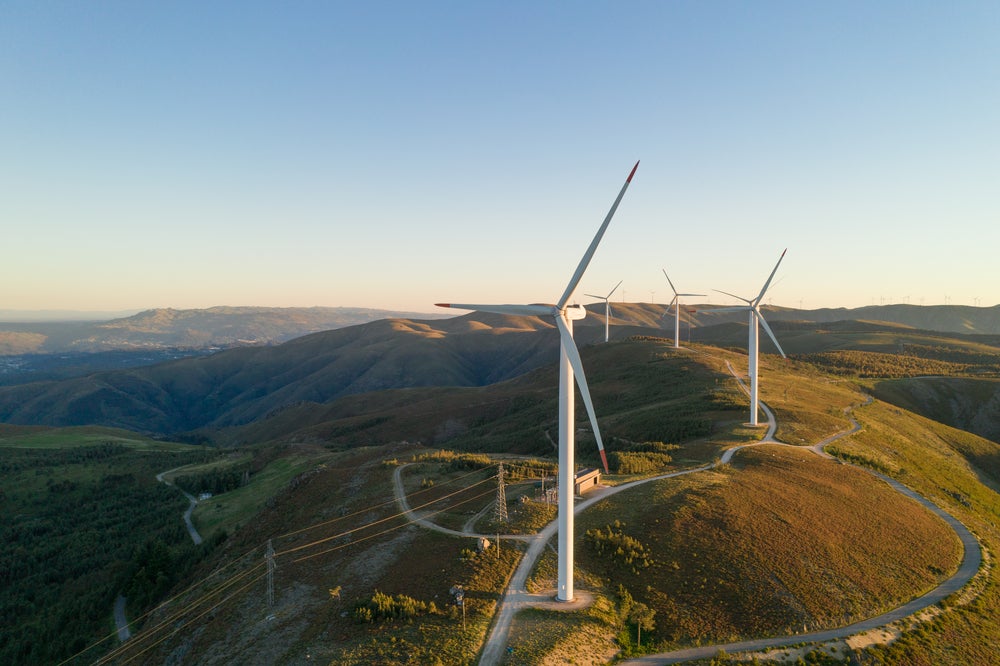
The EU built a record number of wind farms in 2023, but its total wind power capacity remains behind its 2030 climate targets, according to data from industry association WindEurope.
The EU built and connected to its grid 17GW of new wind capacity last year, WindEurope data shows. This figure comprises 14GW of onshore wind and 3GW of offshore wind, representing the biggest increase in wind power installations in a single year in the bloc’s history.
Wind power produced 19% of Europe’s total electricity output last year. Hydropower accounted for 13%, solar 8% and biomass 3%. Renewables in total amounted to a record 44% of electricity produced in the bloc for 2023.
Regardless, wind capacity remains “well below” the 30GW of new installations required each year between now and 2030 for the EU to meet its climate targets, WindEurope said.
Germany built the most new wind capacity of all member states. The country witnessed a record year in 2023 for both wind and solar installations, although its wind capacity also lags government targets.
The Netherlands and Sweden came close behind, with the Netherlands building the most new onshore wind farms of all member states, including the 1.5GW Hollandse Kust Zuid, currently the world’s largest wind farm.
Across Germany, Belgium, France, Italy and the UK, wind and solar output hit a record average of 45GW last summer. Output from the two renewable energy sources since the beginning of June was 20% higher than the previous summer’s record, according to a study from energy information group Montel, published at the end of August.
Further, the amount of electricity produced from 1GW of wind capacity continued to grow as renewable technologies become more efficient, WindEurope found. The ‘capacity factor’ – the measurement for electrical capacity produced from a unit of capacity – of new onshore wind farms now ranges from 30–48%, while new offshore wind consistently hits 50%.
Long permitting processes for new wind power projects across Europe have contributed to capacity increases failing to hit targets. “Things were very bad indeed on the permitting. Now they are improving significantly,” WindEurope CEO Giles Dickson told Reuters, adding that new EU rules to slash permitting wait times have helped the situation.
“This gives us optimism now that the improvement that we started to see last year is going to be sustained, that we can look forward to an increase in the volumes of new wind that are built,” he said.
Managing director of the German Solar Industry Association Carsten Körnig said earlier this month that the same is true for solar installations. “Further measures to speed up the process are required in order to upgrade the electricity and heating networks more quickly, to feed them with even higher solar shares and to make them available at any time with the help of larger storage capacities,” he said.



